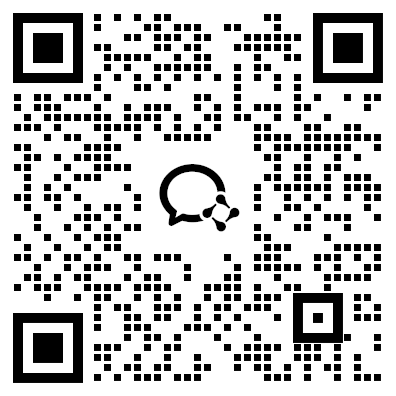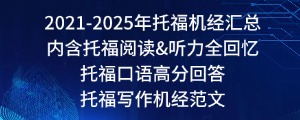2014-04-08 14:38:25 来源:新东方在线整理托福资料下载
Lecture 1
Archaeology (Antikythera Mechanism)
Narrator
Listen to part of a lecture in an archaeology class.
Professor
I was talking to one of my colleagues in the physics department the other day, and we ended up discussing how one discovery can change everything. My colleague mentioned how the theory of relativity completely changed the field of physics. At any rates, that conversation got me thinking about archaeological finds that really changed our understanding of ancient civilizations. So I want to talk about the discovery of the Antikythera Mechanism.
The Antikythera Mechanism was found a hundred years ago, under water in an ancient Greek shipwreck in the Mediterranean Sea. It was in extremely poor condition and in many corroded pieces. But once we figured out what it was and reconstructed it. Well, I simply don't have the words to convey how extraordinary this find was.
The Antikythera Mechanism is a relatively small device, roughly the size of a shoebox, made of gears fitted inside a wooden case. In its original state, there were rotating dials and other indicators on the top, with letters and drawings showing the Sun, the phases of the moon and different constellations. Inside the box, bronze gears would have rotated the displays. The displays, uh, the indicators of the Antikythera Mechanism, would then moved to show the motion of the Sun and moon relative to the planets and stars. The device could be used to tell the different phases of the moon and much more.
Well, scientists have recently analyzed the inscriptions on the mechanism and re-examine the other cargo in the ship wreck, and the evidence makes an absolute case that this device dates back to ancient Greece somewhere between 150 and 100 B.C.E. What makes that so fascinating is that before we found the Antikythera Mechanism, the earliest device we had that could track the Sun and moon like this was invented over 1,000 years later. So when this was first found, people literally would not believe it. Some of my colleagues insisted it had to have been made well after 100 B.C.E. But this physical evidence was conclusive. It was that old.
Of course part of what made this find so unusual is that the Antikythera Mechanism is constructed of bronze. Now, it is not that bronze was all that rare in Greece then, it is just that bronze was valuable and could easily be recycled. It would have been relatively easy for a person with knowledge of metals to melt down bronze objects and forge them into…well, say, coins. Bronze was used to made money back then. Or mold the bronze into anything else of value for that matter. We are very fortunate that the device ended up under water, because otherwise it probably would have ended up recycled into…who knows what.
Now, it was a challenge to figure out the Antikythera Mechanism. It spent over 2,000 years at the bottom of the sea before it was discovered. And even after it was discovered, it was still a number of years before we really understood what it was. You see, the mechanism had corroded underwater, and many of the gears were stuck together in a mass. Cleaning it was only partly successful. We could only get a good look at the structure of the gears after gamma-rays were used to see inside, very similar to the way X-rays are used to see your bones.
Now, once we got a good look inside, we saw a really complex device. The many gears not only moved in a way that could indicate the phases of the moon. The Antikythera Mechanism also tracked both the lunar year and the solar year. Additionally, the gears also moved to match the motions of the planet and predicted eclipses. But one thing that is particularly notable is that the mechanism was so precise that it even took into account a particular irregularity in the moon's orbit, which requires some very complex math to replicate in mechanical device.
You could say that the Antikythera Mechanism was a very precise calendar, which stands to reasons calendars were very important to ancient peoples. Religious festivals had to be held at the right time of year, crops needed to be planted at the right time as well. And let's not forget that eclipses in planetary motions had important symbolic meanings.
本文关键字: 托福听力TPO23原文 托福听力TPO23文本

 资料下载
资料下载
2021-2024托福机经试题|答案|范文下载
发布时间:2024-02-21关注新东方在线托福
回复【XDF】获取
托福全科备考资料大礼包
发布时间:2024-02-21关注新东方在线托福
回复【XDF】获取
托福正价课试听课程包
发布时间:2024-02-21关注新东方在线托福
回复【XDF】获取
托福定制备考规划
发布时间:2024-02-21关注新东方在线托福
回复【XDF】获取
托福TPO免费模考
发布时间:2024-02-21关注新东方在线托福
回复【XDF】获取
托福免费水平测试
发布时间:2024-02-21关注新东方在线托福
回复【XDF】获取
托福写作新题型模拟题+范文汇总[ETS发布]
发布时间:2023-07-30关注新东方在线托福
回复【XDF】获取
2023全年托福机经PDF版下载
发布时间:2023-06-17关注新东方在线托福
回复【XDF】获取
2022全年托福机经PDF版下载
发布时间:2023-06-17关注新东方在线托福
回复【XDF】获取
2022全年写作托福机经整理
发布时间:2023-01-13关注新东方在线托福
回复【XDF】获取
2022年托福考后题目回忆
发布时间:2023-01-13关注新东方在线托福
回复【XDF】获取
托福口语黄金80题附录音
发布时间:2023-01-13关注新东方在线托福
回复【XDF】获取
新东方IBT写作网络课堂录音[.rar]
发布时间:2023-01-13关注新东方在线托福
回复【XDF】获取
21天托福听力提升计划
发布时间:2023-01-13关注新东方在线托福
回复【XDF】获取
不怕跑题偏题,这份写作资料请收好
发布时间:2023-01-13关注新东方在线托福
回复【XDF】获取
托福阅读提分技巧锦囊妙计
发布时间:2023-01-13关注新东方在线托福
回复【XDF】获取
口语拖后腿?因为你缺少这套万能句式资料
发布时间:2019-11-01关注新东方在线托福
回复【XDF】获取
攻破托福听力难关的资料包
发布时间:2023-01-13关注新东方在线托福
回复【XDF】获取
看剧学英语,经典美剧一键获取
发布时间:2019-11-01关注新东方在线托福
回复【XDF】获取
原版外刊资源合集|精心打包整理
发布时间:2019-11-01关注新东方在线托福
回复【XDF】获取

关注新东方在线托福,
回复【XDF】获取大礼包

版权及免责声明
1,"新东方在线"上的内容,包括文章、资料、资讯等, 本网注明"稿件来源:新东方在线"的,其版权 均为"新东方在线"或北京新东方迅程网络科技有限公司所有 ,任何公司、媒体、网站或个人未经授权不得转载、链接、转贴或以其他方式使用。已经得到 "新东方在线"许可 的媒体、网站,在使用时必须注明"稿件来源:新东方",违者本网站将依法追究责任。
2, "新东方在线" 未注明"稿件来源:新东方"的 文章、资料、资讯等 均为转载稿,本网站转载出于传递更多信息之目的,并不意味着赞同其观点或证实其内容的真实性。如其他媒体、网站或个人从本网站下载使用,必须保留本网站注明的"稿件来源",并自负版权等法律责任。如擅自篡改为 " 稿件来源:新东方 " ,本网站将依法追究其法律责任。
3,如本网转载稿涉及版权等问题,请作者见稿后在两周内与新东方在线联系。


 资料下载
资料下载
关注新东方在线托福
回复【XDF】获取
关注新东方在线托福
回复【XDF】获取
关注新东方在线托福
回复【XDF】获取
关注新东方在线托福
回复【XDF】获取
关注新东方在线托福
回复【XDF】获取
关注新东方在线托福
回复【XDF】获取
关注新东方在线托福
回复【XDF】获取
关注新东方在线托福
回复【XDF】获取
关注新东方在线托福
回复【XDF】获取
关注新东方在线托福
回复【XDF】获取
关注新东方在线托福
回复【XDF】获取
关注新东方在线托福
回复【XDF】获取
关注新东方在线托福
回复【XDF】获取
关注新东方在线托福
回复【XDF】获取
关注新东方在线托福
回复【XDF】获取
关注新东方在线托福
回复【XDF】获取
关注新东方在线托福
回复【XDF】获取
关注新东方在线托福
回复【XDF】获取
关注新东方在线托福
回复【XDF】获取
关注新东方在线托福
回复【XDF】获取

关于我们 - 商务合作 - 广告服务 - 代理商区域 - 客服中心 - 在线留言 - 退换货说明 - 合作伙伴 - 联系我们 - 人员招聘 - 网站地图 - 热点关注 - 寓乐优学
新东方教育科技集团旗下成员公司 全国客服专线:400-676-3300
Copyright (C) 2000-2013 koolearn.com Inc. All rights reserved. 新东方在线 版权所有
京ICP证050421号 京ICP备05067669号 京公网安备11010802017616号 网络视听许可证0110531号